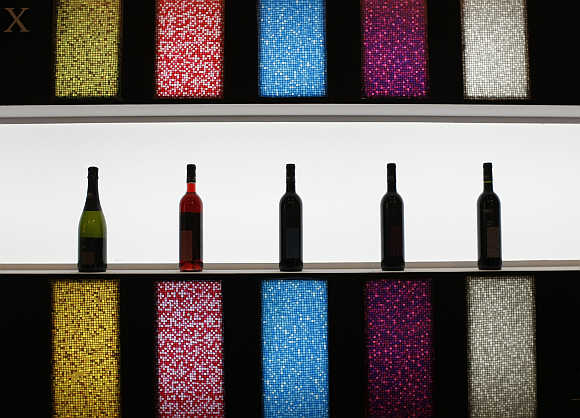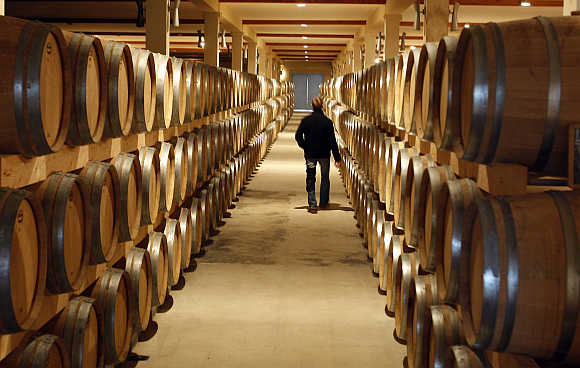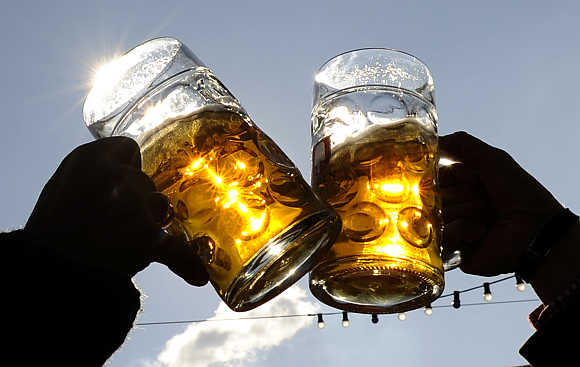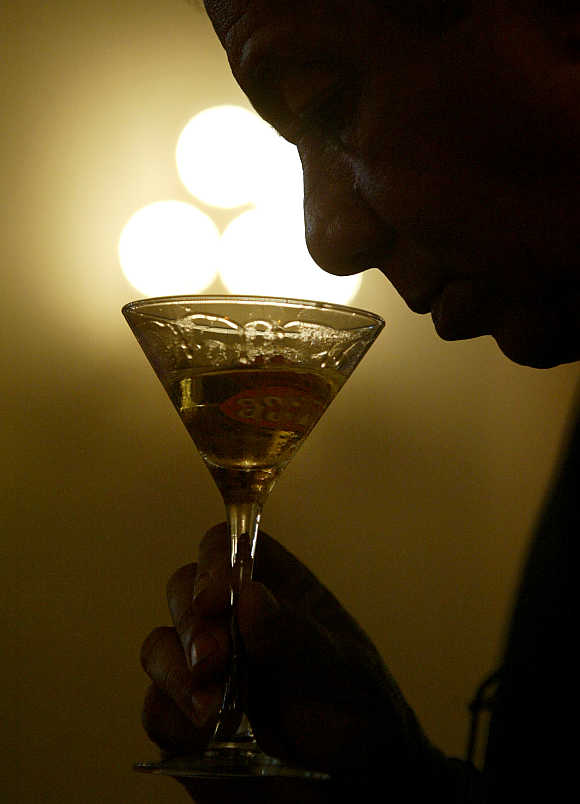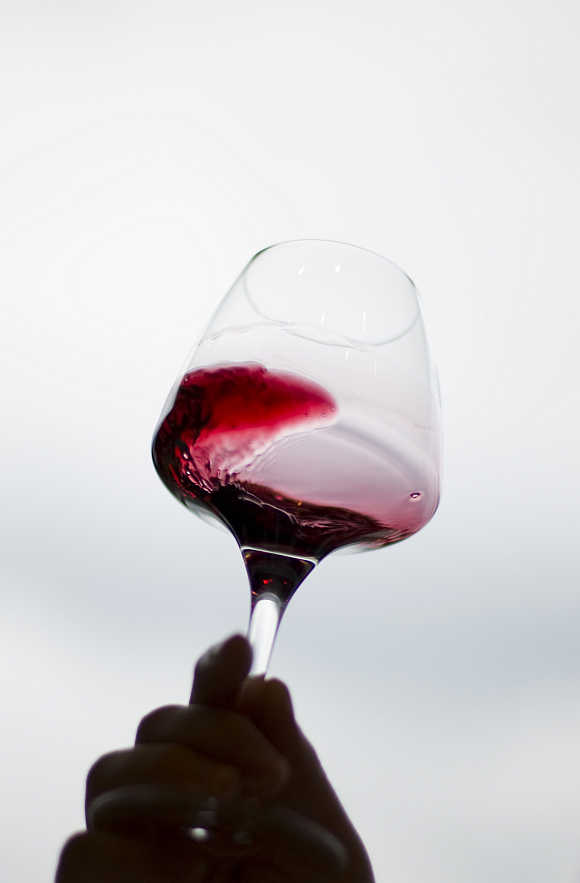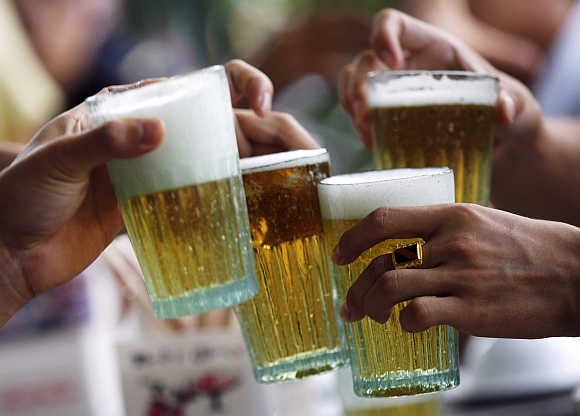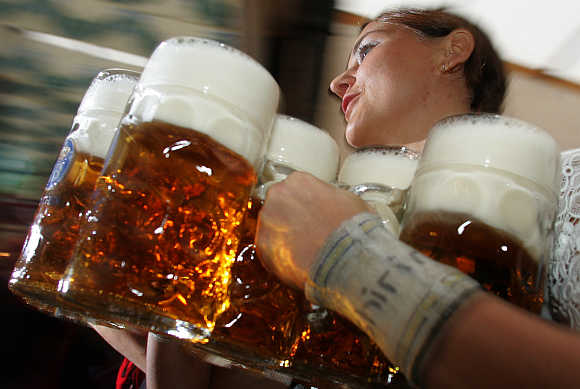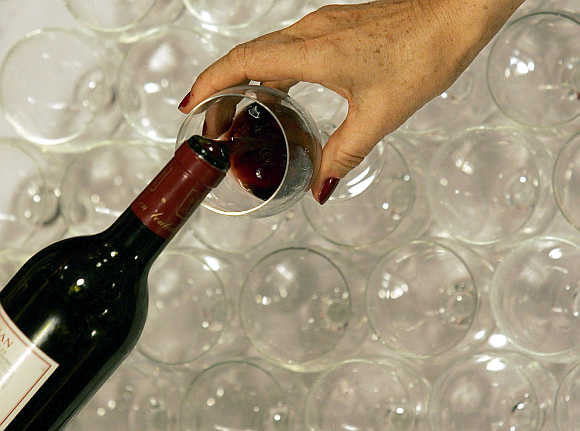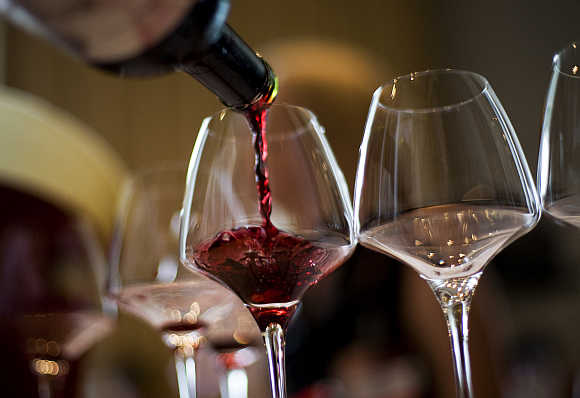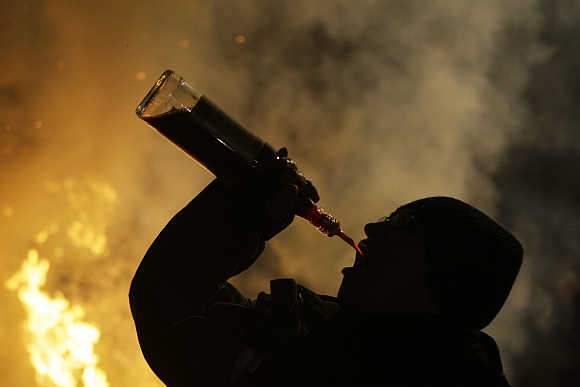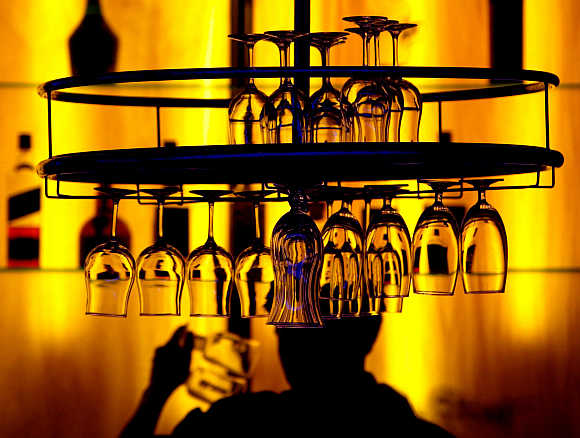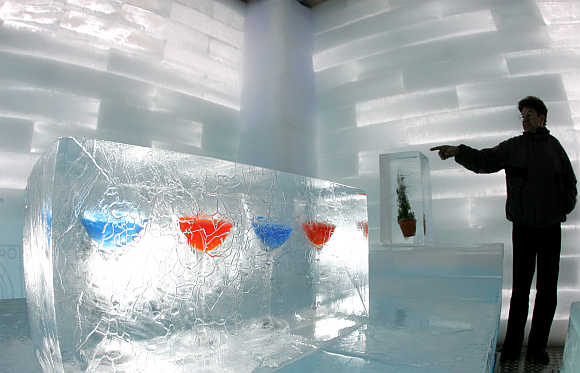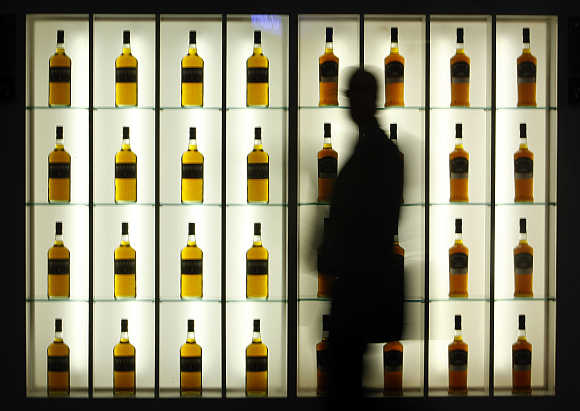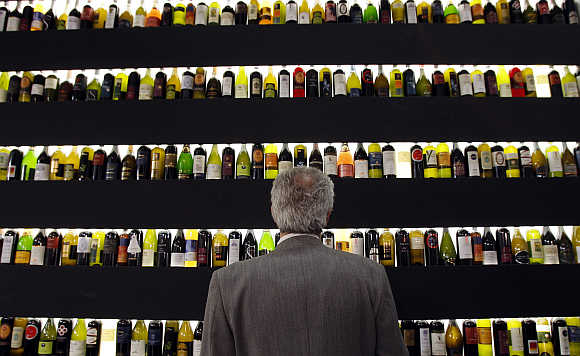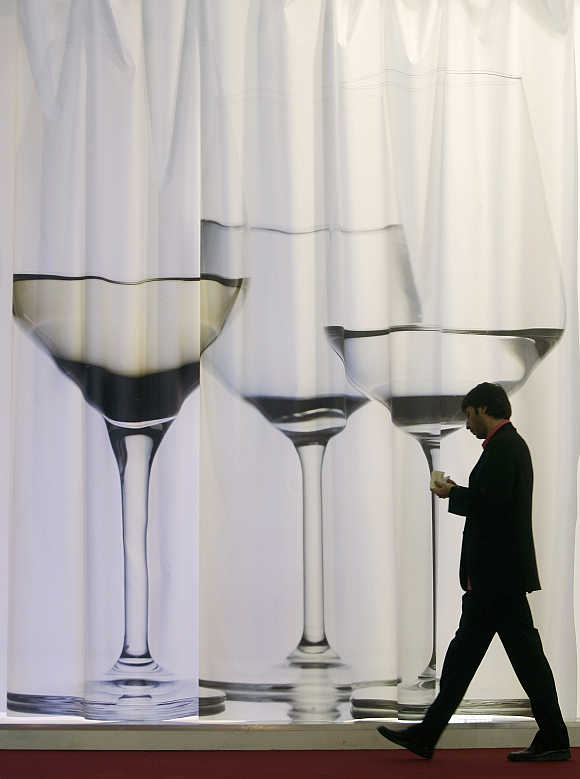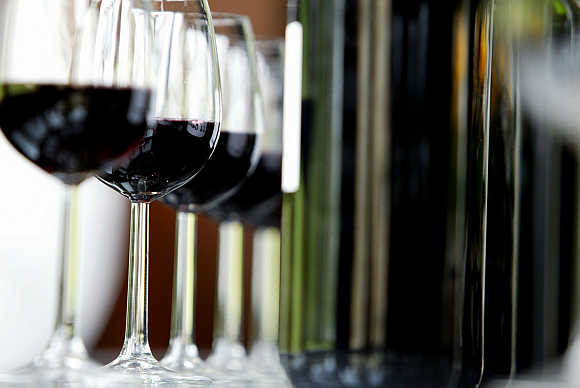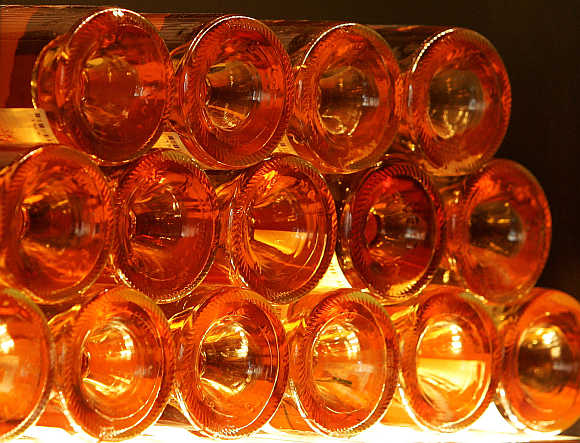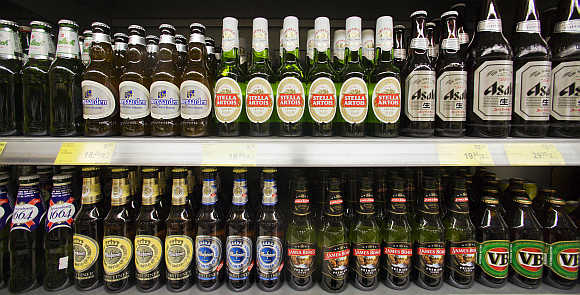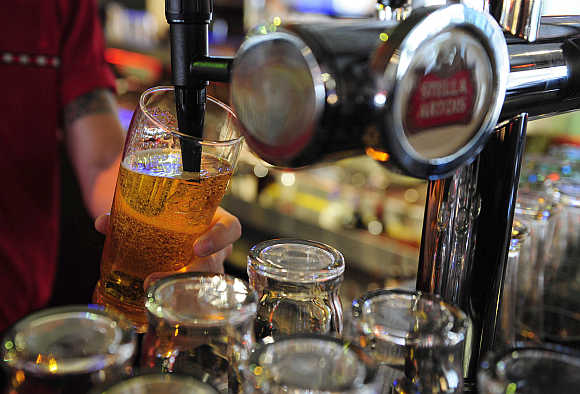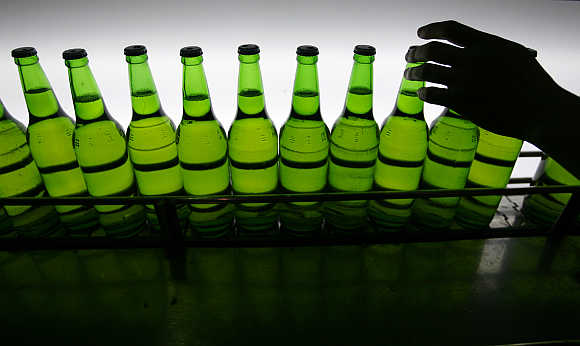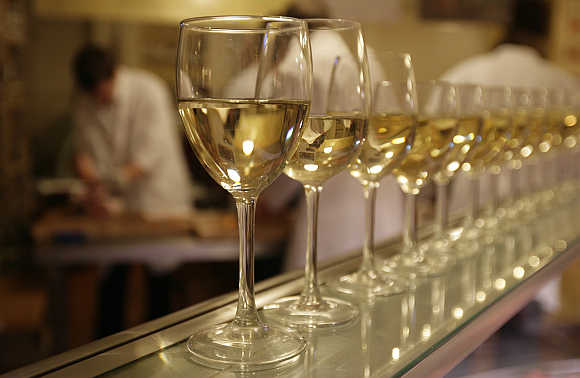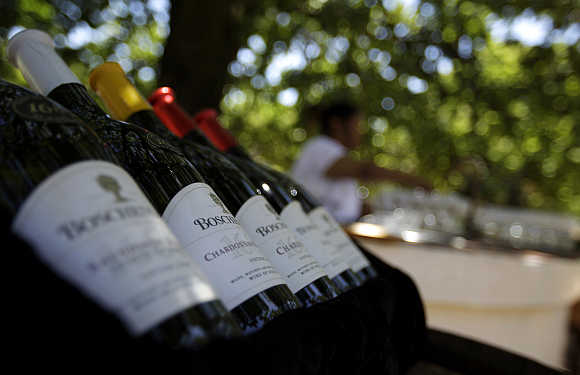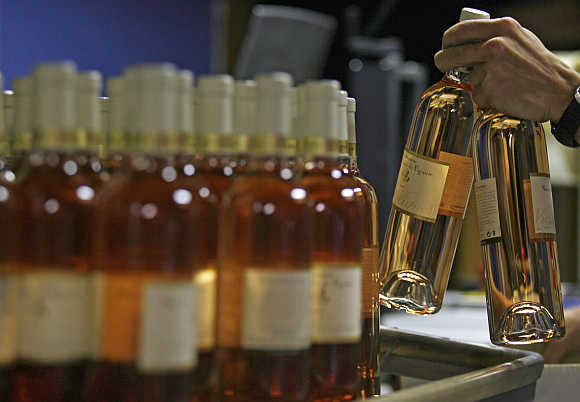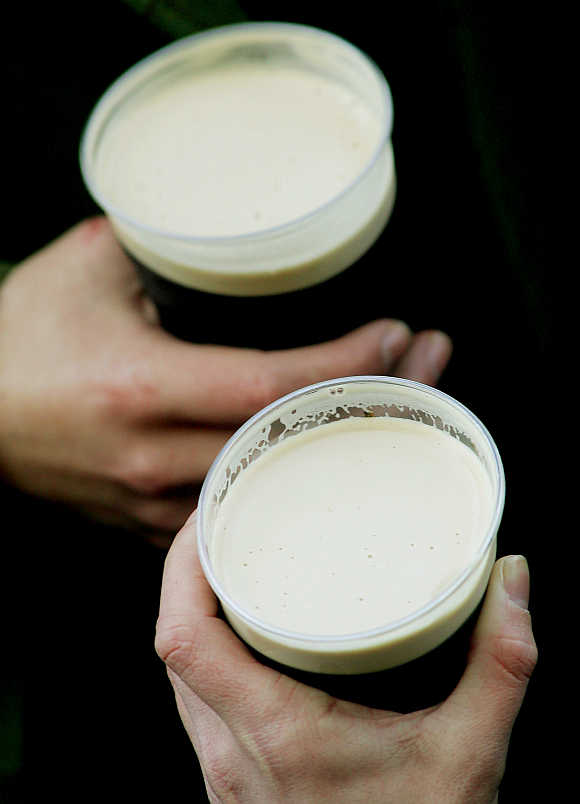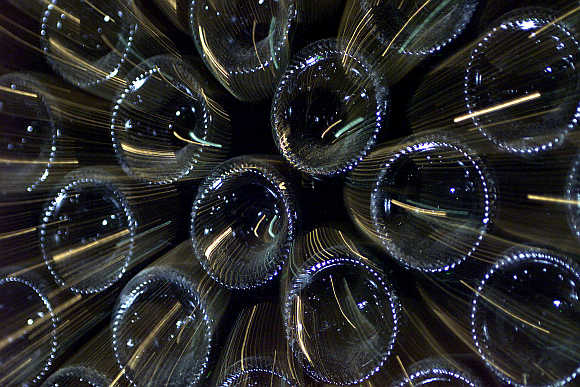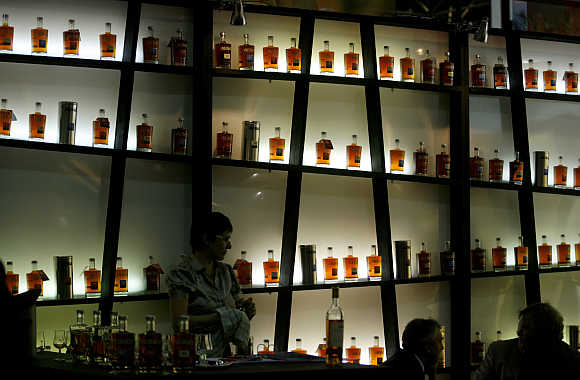 | « Back to article | Print this article |
Stunning photos has the world raising a toast to alcohol
From Spain to Taiwan, the taste for alcohol remains a constant, as these photographs show.
Investing in wine has more to do with emotion than cash, say experts. Although entering the market is not for the faint hearted, leaving personal taste can do wonders for the investor, they caution.
Click NEXT to read more...
Stunning photos capture the business of alcohol
When investing in wine, as opposed to drinking it, experts advise leaving your taste buds at the cellar door but keeping your eyes wide-open.
Click NEXT to read more...
Stunning photos capture the business of alcohol
Wine is highly regulated, but the market it trades in is not, and the entry fee is not for the faint of heart.
Click NEXT to read more...
Stunning photos capture the business of alcohol
"For proper investment in wine you really need to separate out your personal taste and your personal preference from investment purposes," said Jennifer Simonetti-Bryan, author most recently of The One Minute Wine Master and Pairing with the Masters: A Definitive Guide to Food & Wine.
Click NEXT to read more...
Stunning photos capture the business of alcohol
"These are two entirely different goals," said Simonetti-Bryan.
Click NEXT to read more...
Stunning photos capture the business of alcohol
"Wine is completely emotional and that's what makes it very difficult as an asset class," said Simonetti-Bryan, who before attaining the top qualification of Master of Wine, worked as a financial analyst inLondon.
Click NEXT to read more...
Stunning photos capture the business of alcohol
Collectible wine represents less than 1 per cent of the entire world's annual wine production.
Click NEXT to read more...
Stunning photos capture the business of alcohol
The other 99 per cent of this year's output will be up for tasting and sale at VinExpo, the industry's global trade show in Bordeaux, France.
Click NEXT to read more...
Stunning photos capture the business of alcohol
But at least some of that top 1 per cent, the classified growths of prized Bordeaux, have already been sampled, rated and priced.
Click NEXT to read more...
Stunning photos capture the business of alcohol
Investors "can do extraordinarily well, but only if you know what you're doing," said Charles Curtis, the former head of wines in New York and Hong Kong for Christie's auction house, who now advises winecollectors and investors.
Click NEXT to read more...
Stunning photos capture the business of alcohol
Curtis, like Simonnetti-Bryan, is one of 300 people in the world to hold the coveted Master of Wine title.
Click NEXT to read more...
Stunning photos capture the business of alcohol
"To be successful in investing in any alternative asset - wine, jewellery, art - you have to have a passion for what you collect," said Curtis, whose clients range from those with small collections to those with "five (million dollar) to $10 million cellars."
Click NEXT to read more...
Stunning photos capture the business of alcohol
Timing is also crucial. For example, take the price of a case of 1982 Lafite, the premiere cru Bordeaux.
Click NEXT to read more...
Stunning photos capture the business of alcohol
Its cost rose to about $64,000 in May 2011, only to fall to less than $40,000 in January 2012.
Click NEXT to read more...
Stunning photos capture the business of alcohol
"The '82s began to flood the market last year because they were 30 years old and they're peaking," said Jennifer Williams-Bulkeley, who worked in London and managed a portfolio in which the assets were mostly stocks and bonds.
Click NEXT to read more...
Stunning photos capture the business of alcohol
She recently opened a Boston-based wine investment advisory service and applies a soupcon of statistics and a pinch of analytics, combined with knowledge of terroir to the investment portfolios of herwine clients.
Click NEXT to read more...
Stunning photos capture the business of alcohol
"If you're properly managing your wine portfolio, you know when to sell it," said Williams-Bulkeley.
Click NEXT to read more...
Stunning photos capture the business of alcohol
In addition to timing, wine must be stored correctly, shipped properly and have impeccable provenance to qualify as a viable investment.
Click NEXT to read more...
Stunning photos capture the business of alcohol
Questions about provenance are behind a lawsuit filed against celebrity Chef Charlie Trotter.
Click NEXT to read more...
Stunning photos capture the business of alcohol
Two New York collectors sued in Chicago's federal court, accusing Trotter of selling them a big bogus bottle of 1945 Burgundy for more than $46,000.
Click NEXT to read more...
Stunning photos capture the business of alcohol
Some auction houses have also been sued for selling suspect wines.
Click NEXT to read more...
Stunning photos capture the business of alcohol
Auctions generate most of the publicity, yet they represent a fairly small percentage of the roughly $4 billion fine wine market.
Click NEXT to read more...
Stunning photos capture the business of alcohol
So far this year, the auction houses of Acker, Merrall & Condit, Christie's, Hart Davis Hart, and Sotheby's have sold a little over $100 million worth of fine wine around the world.
Click NEXT to read more...
Stunning photos capture the business of alcohol
While this spring's auction season still has a couple of auctions left and final totals are not in, it looks as though sales will be lower than the first half of last year, when sales totaled about $160 million.
Click NEXT to read more...
Stunning photos capture the business of alcohol
If you still want to get started investing in wine, you'll need to open your wallet wide. Curtis pegged the minimum needed to begin investing seriously in wine at about $100,000.
Click NEXT to read more...
Stunning photos capture the business of alcohol
Williams-Bulkeley's managed accounts begin at $250,000.
Click NEXT to read more...
Stunning photos capture the business of alcohol
In the Europe and Asia, it is still possible for sophisticated investors to put money into wine funds for comparatively little - between $15,000 and $50,000.
Click NEXT to read more...
Stunning photos capture the business of alcohol
But the funds are not without risk. Some are suffering from liquidity problems and unrealistic valuations of their holdings.
Click NEXT to read more...
Stunning photos capture the business of alcohol
Last month, regulators in Luxembourg forced the wine fund Nobles Crus to suspend redemptions temporarily after the fund manager admitted it did not have enough cash on hand to meet redemption demands.
Click NEXT to read more...
Stunning photos capture the business of alcohol
Wines made from fruits besides grapes are usually named after the fruit from which they are produced (for example, pomegranate wine, apple wine and elderberry wine) and are generically called fruit wine, according to Wikipedia.

© Copyright 2025 Reuters Limited. All rights reserved. Republication or redistribution of Reuters content, including by framing or similar means, is expressly prohibited without the prior written consent of Reuters. Reuters shall not be liable for any errors or delays in the content, or for any actions taken in reliance thereon.

